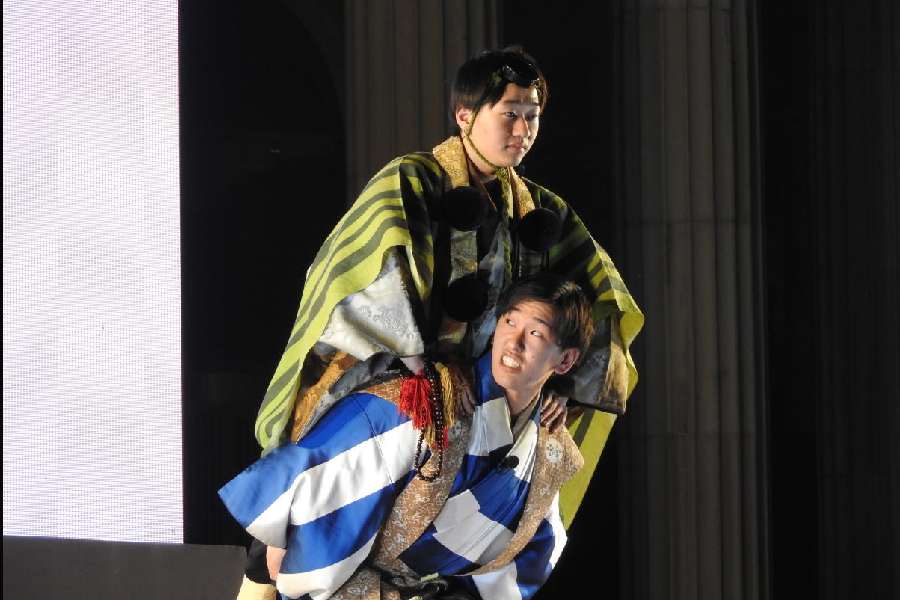What makes traditional comedy relevant? Is it its capacity to transcend cultural specificities? Or the use of stock characters and themes that are universal? Kyogen, a classical form of comedy that originated in 14th-century Japan, presented recently at the Victoria Memorial Hall, provided an opportunity to ponder these questions. Although developing at the same time as Noh, a form of Japanese theatre, Kyogen evolved independently as a comedic stage art and began to be performed by niche groups as an interlude between serious Noh segments.
Kyogen, staged by the Shigeyama Sengoro clan — the members are currently 14th-generation practitioners — at the Western Quadrangle of VMH, offered a sample of this ancient form that struck a balance between slapstick and parody. Followed by an explanatory prelude about the tenets of Kyogen, the recital consisted of two
segments, each of 30-minute duration, that attempted to find humour within
the mundane.
The first piece, Kaki Yamabushi (picture), explored the myth of the yamabushi or mountain priest (a stock character in Kyogen) who, feeling famished, climbs up a persimmon tree and starts devouring a fruit when he is accused of trespassing by the farm-owner. The ensuing dialogue, as the farm-owner goads the priest to emulate animal calls and jump off the tree, was marked by witty ripostes and performative ridiculing. With a stool as the only prop, the vast stage stimulated the imagination as the two performers enunciated their words and expressions, stomped, slid and jumped with martial arts-like agility, etching out the comic bits.
Bo Shibari, the second piece, portrayed the story of a feudal lord who ties up his servants to prevent them from stealing his sake. The performers employed rigorous action, twisted and turned to depict the servants' outwitting their master as they get drunk even with their hands tied to a pole. Such blunders, funny accidents and absurdities that are integral to Kyogen are perhaps instrumental in the continuity of the repertoire.











